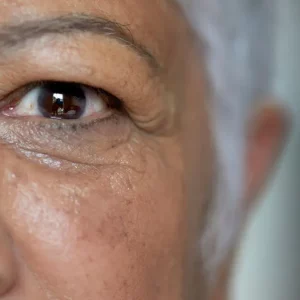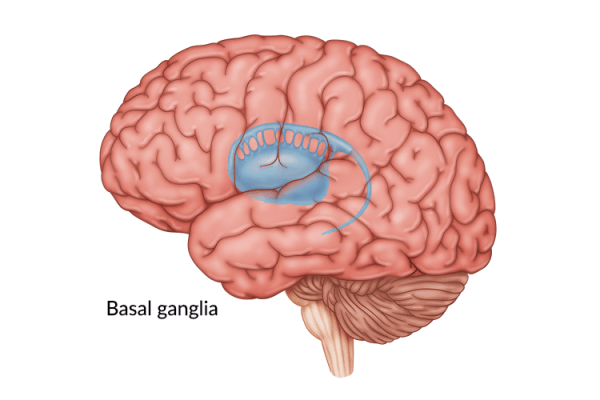Tics after head trauma can cause a person to make sudden, repetitive movements or vocalizations. These movements are involuntary, although they do not always appear that way.
This article will discuss the possible causes and symptoms of tics after a head injury, plus some helpful ways to manage them.
Can Head Trauma Cause Tics?
Tics are one of several post-traumatic movement disorders that can occur after severe head trauma. According to most estimates, these disorders can affect anywhere between 13% to 66% of TBI patients.
The exact cause of tics after a brain injury is unknown, but there are several possible factors. These include:
- Genetic predisposition
- Basal ganglia damage
- Poor communication between different brain structures
- Excess dopamine
Most tics develop within the first few weeks after a head injury, but some have been known to appear as late as one year post-injury.
Tics are primarily involuntary movements. However, some tics are accompanied by premonitory sensory urges (uncomfortable feelings you get before a tic that may be improved by certain movements). Many patients with tics describe it as the feeling you get right before you sneeze.
Types of Tics That Can Occur After Head Trauma
There are two main types of tics that can occur after head injury: motor tics and vocal tics. We will discuss both in more detail in the sections below:
Vocal Tics

Vocal tics after head trauma can vary in their complexity. Most involve short, meaningless sounds such as grunts or throat clearing.
But some vocal tics are so complex that they do not sound unintentional. For example, some can actually cause a person to hum or sing their favorite tune. Others, such as echolalia, cause the patient to repeat whatever phrase they just heard from another person.
Other types of vocal tics have less socially acceptable effects. Perhaps the most famous type of vocal tic, known as coprolalia, causes a person to involuntarily exclaim obscene language. Often these vocal tics are spoken in a louder tone or different pitch than normal conversational speech.
This type of vocal tic is a common symptom of Tourette’s syndrome, but it can also occur after head trauma.
Vocal tics, like motor tics, are involuntary. But because they tend to involve words, they can cause the person to experience social stigma and psychological distress.
Motor Tics
Motor tics after head trauma can also vary in their presentation and can affect any muscle or part of the body. However, most motor tics develop in a rostral-caudal manner.
This means that tics involving facial and head movements typically emerge first. Then, as time passes, tics involving the torso and extremities may also appear.
Some examples of motor tics include:
- Rapid blinking
- Eye darting
- Shoulder shrugs
- Head jerks
- Lip smacking
Sometimes tics can involve multiple, sequential movements that appear purposeful, such as making rude faces or gestures. However, as complex as these movements seem, they are involuntary.
Distinguishing Between Tics and OCD

In rare cases, head injury patients can develop obsessive-compulsive disorder (OCD). This is an anxiety disorder that causes intrusive thoughts. Patients with OCD often perform certain compulsive behaviors that help silence these thoughts.
These behaviors, however, can look almost indistinguishable from the tics caused by movement disorders. Therefore, finding a treatment plan can be difficult. Medication used for OCD often does not work for tics and vice versa, which is why it is important to get the right diagnosis.
In general, tics after head trauma are brief and lack purpose, whereas compulsions are more intentional and complex. However, that is not always the case. Sometimes tics can also manifest as complex actions.
Compulsions are also usually made in response to anxiety or fear. Tics, on the other hand, are not usually accompanied by anxiety and are mostly involuntary.
Still this distinction is not always easy to apply, because it’s not always clear why someone is making a repetitive movement. Therefore, it is helpful to schedule an evaluation by a psychologist when tics occur to determine whether OCD is involved.
Treating Tics After Head Trauma

The most effective form of treatment for tics after head trauma is a combination of cognitive-behavioral therapy and medication.
Specifically, the type of therapy that most tic patients have success with is habit reversal training. Habit reversal training involves four main steps:
- Awareness training. This training helps the patient bring attention to their tics. Then, they will learn to identify any warning signs that may indicate that a tic is about to occur.
- Develop competing responses. Once the person is aware of their tics and what triggers them, the therapist will help them develop an action that can replace it. For example, if they have verbal tics, they might learn to sneeze instead of shouting an obscenity.
- Building motivation. The next step is for the therapist to find ways to motivate the person to prevent tics from coming back. This might include having the patient write down a list of reasons why they want to eliminate their tics.
- Generalization of skills. Finally, the patient will learn to use their skills outside of the doctor’s office and in real-life situations.
The guiding principle behind this treatment is a phenomenon called neuroplasticity. Neuroplasticity means that, with enough practice, a person can rewire their neural connections and change their behavior.
Therefore, even problems like tics and impulsive behaviors after head trauma can be overcome. You just need to learn how to rewire your brain.
Tics After Brain Injury: Key Points
Head trauma can trigger involuntary, repetitive actions known as tics. These behaviors can manifest as verbal or motor tics and can range from simple motions to complex actions.
Obsessive-compulsive disorder can cause problems that look a lot like tics, but requires a completely different treatment protocol. Therefore, patients should consult with a psychologist before beginning treatment.
Sometimes tics after a head trauma will resolve on their own. If the tics do not go away, or if they cause too many problems, habit reversal training can help you manage them.
With the right treatment, you can begin to reduce the frequency of your tics and gain back control of your behavior again.










